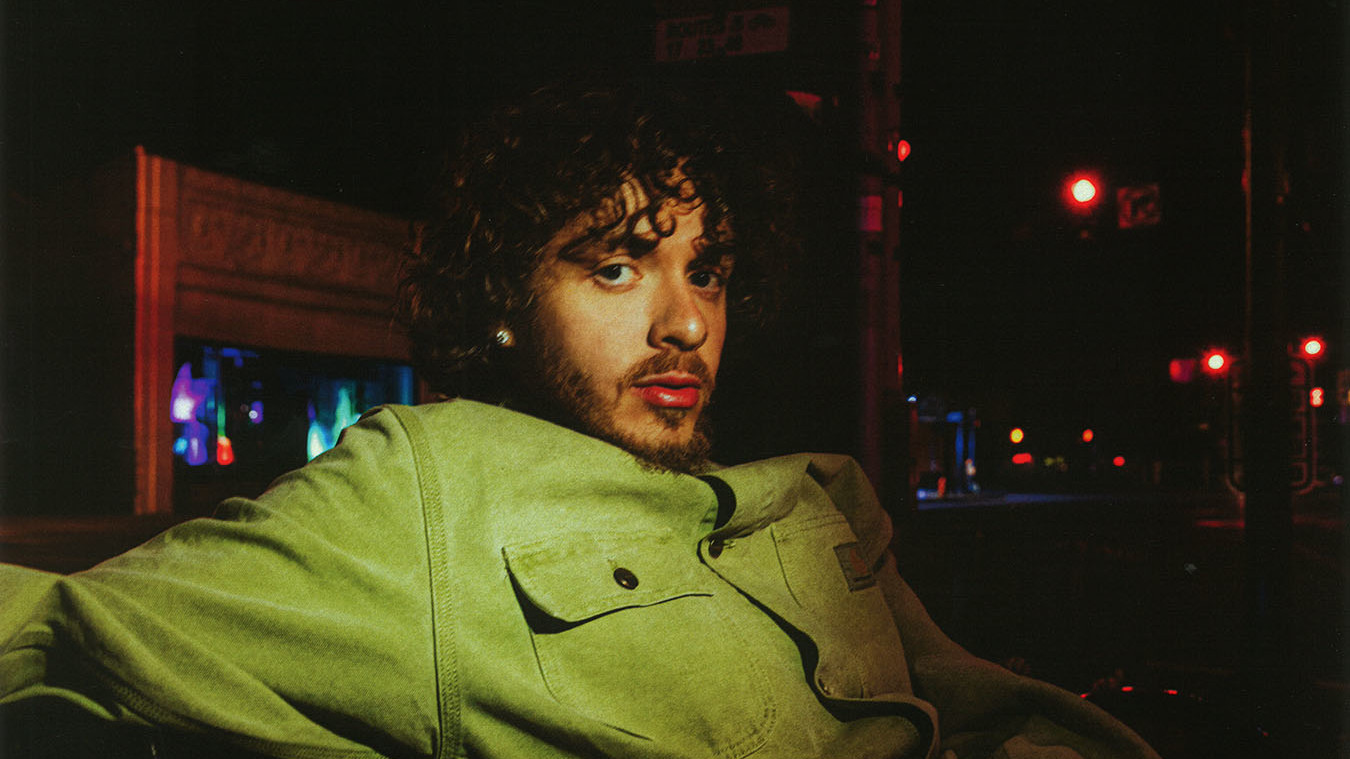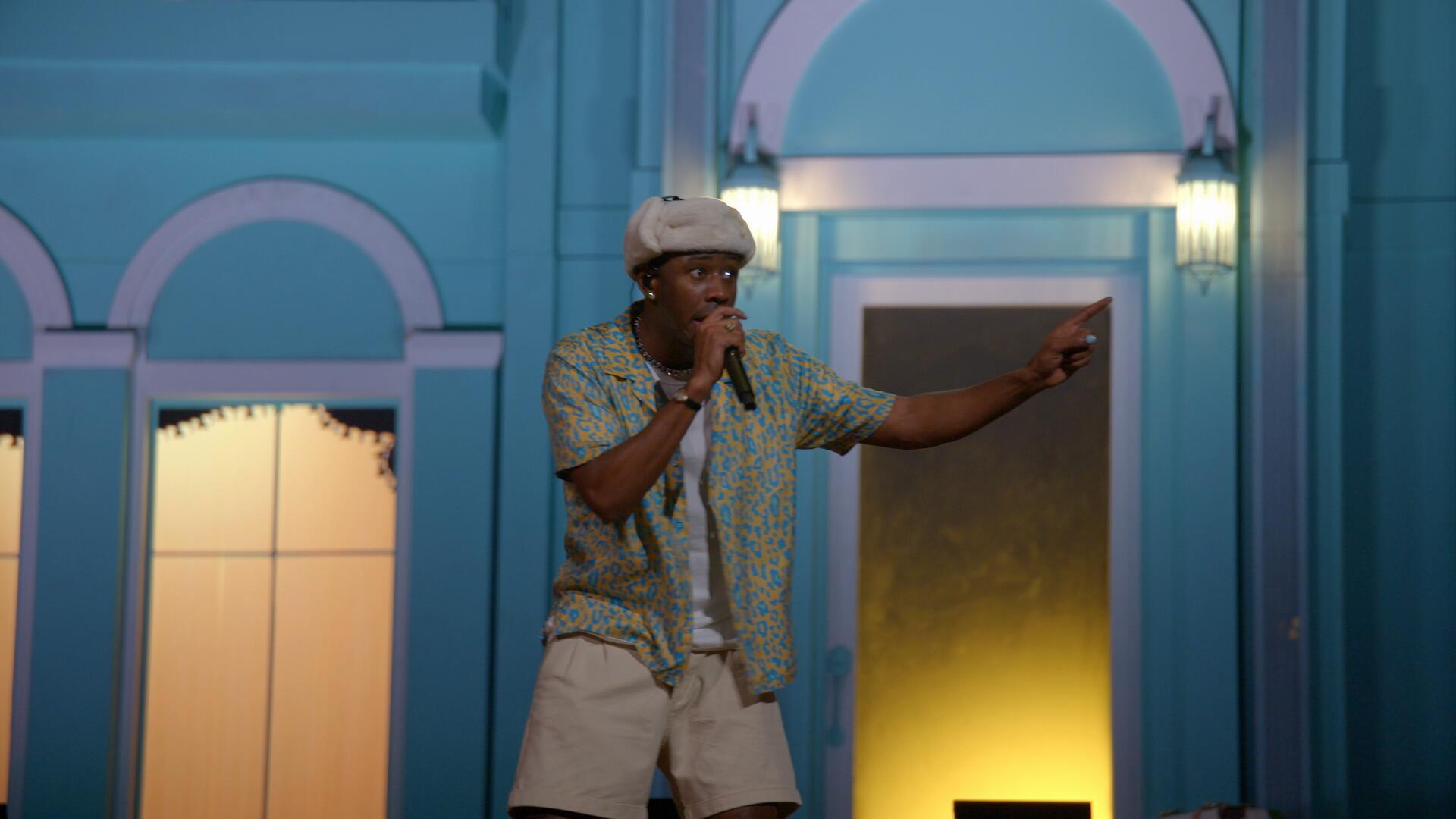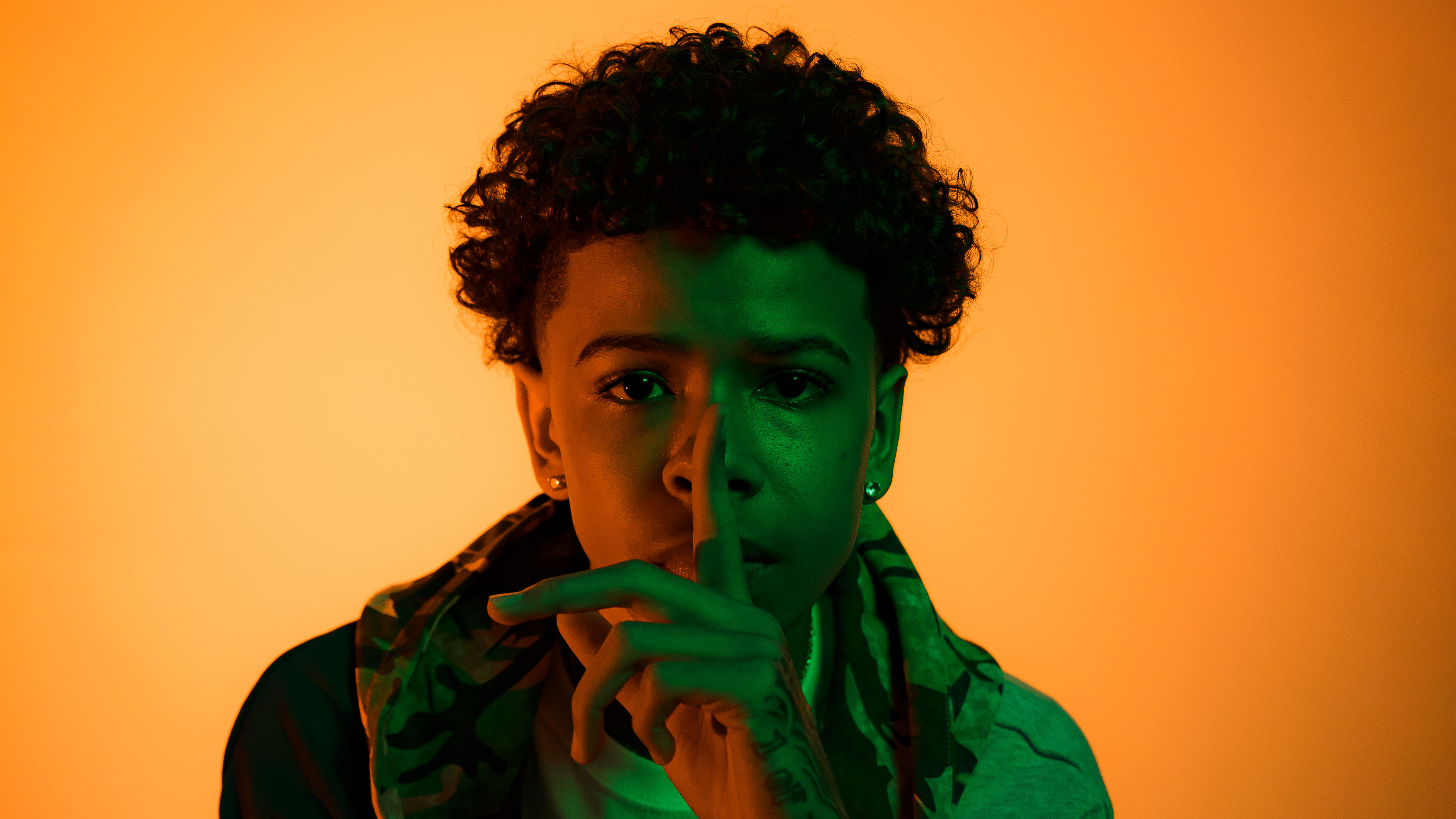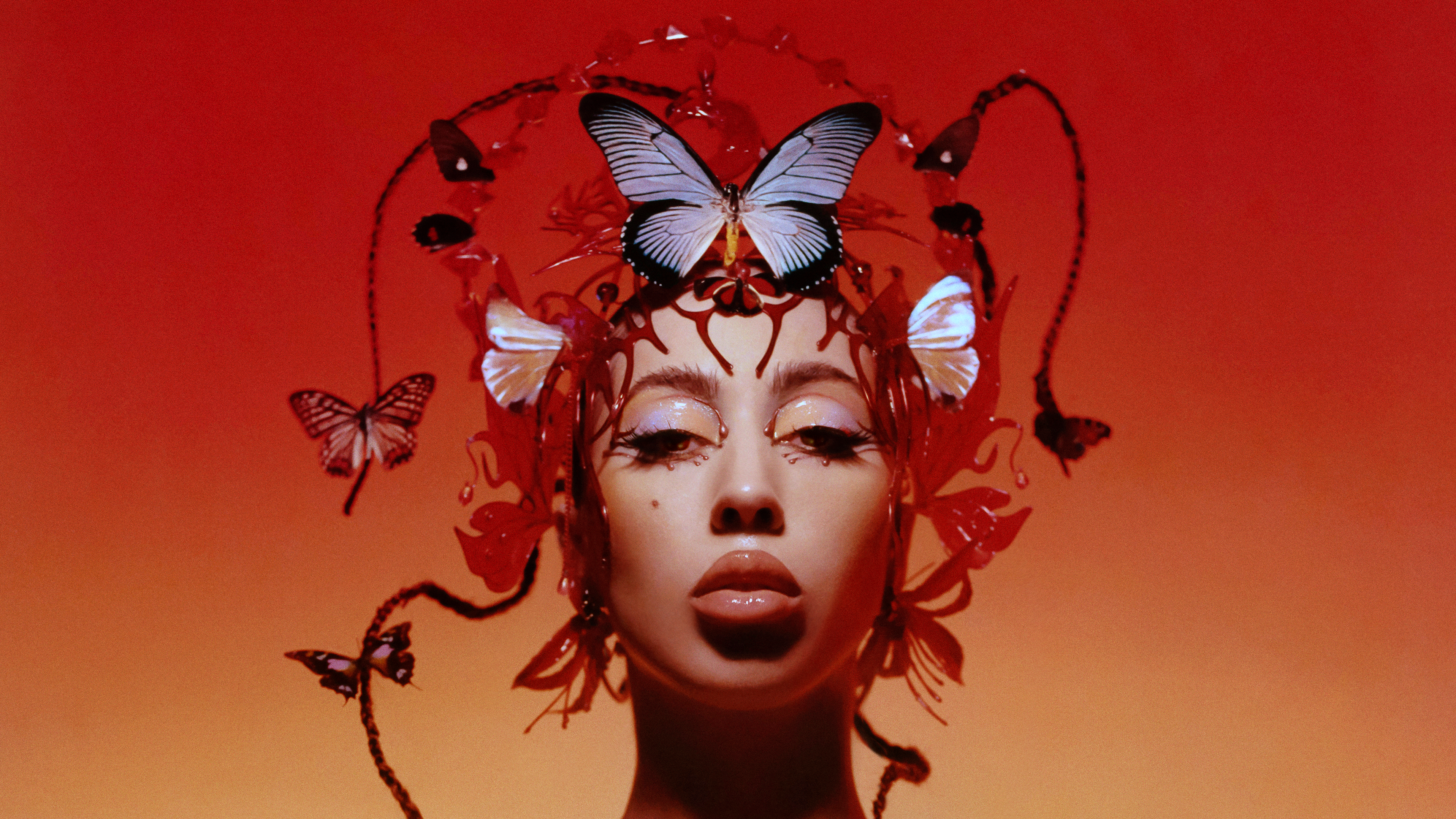
First Impressions of Jack Harlow’s New Album ‘Jackman’



SZA has recruited Doja Cat for a remix of her song “Kill Bill.” The original song comes from SZA’s latest album SOS which was a big release for the Top Dawg Entertainment songstress. After months of anticipation, teases, mixed messages, and more, it was released on December 9, 2022. SZA promoted the album with a tour and has been taking to stages from coast to coast.
“Kill Bill” was one of the biggest songs on the album, with the name generating buzz before people even heard the song. The title was inspired by Quentin Tarantino’s famed franchise of the same name. Fans have seen SZA and Doja Cat work together before for their Grammy-winning hit “Kiss It Better,” but this song differs from that one in essentially every way.
SZA and Doja Cat dropped the “Kill Bill” remix on April 14. Before this, the original song was a single from the album with an accompanying music video. It was directed by Christian Breslauer. Naturally, the visual paid homage to Tarantino’s films. SZA can be seen in a red leather suit much akin to the yellow one the character named The Bride (Uma Thurman) wore in the film. The singer also rides a red motorcycle, and again, The Bride’s was yellow in the film.
Additionally, the opening moments of the video reference one of the most popular scenes in the film. There’s even an animated portion in the clip, much like the anime in the film. These are just touches of how SZA’s team made sure to lean into Tarantino’s classic.
On the remix version of SZA’s “Kill Bill,” Doja Cat provides a rapped verse. Doja recently explained wanting to focus on rap and has been hinting at a full rap album. There have also been talks of her wanting to work with Jay Versace and 9th Wonder, which the rap world knows as high-level producers. Doja doubled down on this rap-focused career path in a series of recent tweets. Amid these tweets, there was a retweet from Jay, validating her rap skills.
In the remix, Doja’s rap verse opens the song. Her bars tell a more detailed version of the events from SZA’s original version. Although she often incorporates singing into her music, this time, she held down rapping alone. The verse has a narrative feeling and gives the song a two-part storyline. Doja’s part is the aftermath of what SZA was speaking about. Listeners know SZA’s chorus opens with “I might kill my ex,” and by the time the song ends, she has switched to “I just killed my ex.” Unfortunately, there is no change in the production for Doja’s rapped verse. After hers ends, the song is like SZA’s original solo version.
There is also a creative visualizer for SZA and Doja Cat’s “Kill Bill” remix. The visual plays on a loop, with some users believing it was the Spotify Canvas Art for the remix. However, this is not the case. The visualizer features an animated character that represents Doja Cat. She is wearing a red leather suit and carrying a mace. As she walks down a path, red windows with silhouettes are behind her. Characters referencing the Crazy 88 from Kill Bill attack her as she walks, and animated Doja fights them off with her weapon. The entire look of the visualizer resembles an old-school side-scrolling video game.
What did you think of Doja Cat’s verse on the “Kill Bill” remix? Let us know in the comments section.
[Via]
Sage Elsesser (better known as Navy Blue) curated an introspective sound that is a far echo from his days skateboarding for Converse. The LA-born MC became a household name in the indie rap scene with the critically acclaimed Navy’s Reprise. However, Elsesser’s wide-ranged creative influences go well beyond rap. He’s dabbled in the spheres of modeling, fashion, and acting. It’s a heck of a resume for a 26-year-old. Discussing his creative interests on the Internet People Live show with Zack Fox, he stated, “Everything I do all feels the same to me. It all serves the same purpose in my life.”
This wide portfolio enabled him to collaborate with an array of influential artists — Earl Sweatshirt, billy woods, The Alchemist, and even Frank Ocean. However, he prefers not to capitalize on this rich social circle from a musical perspective. Opting to keep his thematic ideas to himself, Navy Blue is inherently a self-starter rather than one that relies on the people around him. Ways of Knowing is Navy Blue’s first major-label release under Def Jam Recordings, a project that speaks volumes to Elsesser’s poetic talent.
Navy Blue’s move to Brooklyn at the age of 12 had an evident influence on his sound. Even though he grew up in Los Angeles, his music leans closer to his East Coast contemporaries such as MIKE or billy woods. Ways of Knowing is his most personal project to date: an in-depth analysis of how his relationship with his parents shaped his adulthood. He’s acutely aware of the influence a child’s home life has on their outlook as they grow older. Navy Blue’s relationship with his family is portrayed as multi-faceted. However, Ways of Knowing is ultimately an ode of gratitude to his parents.
Over the past few years, much of the narrative in rap left audiences feeling defeated. Kendrick Lamar’s Mr. Morale and the Big Steppers tackles transgenderism, child molestation, and Black trauma and compacts it into a double-disc listen. Earl Sweatshirt’s Sick! confronts the struggles of post-pandemic life. Throughout Ways of Knowing, Navy Blue seems fed up with this continuous dark cloud hovering over the genre these days. He stated, “I don’t really want to be remembered as this stoic guy who’s perpetually reflecting on his trauma and Black plight, you know? I want to make something that makes people smile out of joy, rather than smile in grief.” Of course, the sobering themes explored in hip-hop are merely a reflection of reality. However, Navy Blue is looking to leave his audience with a sense of hope.
Ways of Knowing is an indie summer album that one could listen to on a hammock for hours. The record is rooted in R&B, more so than any of his previous projects. Navy Blue rides sample-heavy beats which blend the worlds of soul and jazz. Def Jam may have hoped he beefed up this record with mainstream features and an accessible sound. However, Ways of Knowing is anything but that. Navy Blue brings in experimental indie-soul artists such as Budgie and Liv.e to execute his vision.
From the subdued piano keys on “The Medium” to the smooth sampling on “Phases,” Budgie’s production never fails to impress. No track sounds the same, making Ways of Knowing thoroughly unpredictable and engaging. While his direct family is the primary source of narrative on the project, Navy Blue also talks about his past relationships with women. On “The One,” he ruminates on the end of his longest-lasting relationship. He states, “Always here for you / I’ll always love you just like that light that’s always there for you.” His approach to addressing previous partners is one of appreciation and love, rather than spite. The perspective is a unique and refreshing one in the grand scheme of hip-hop’s usual bravado.
Navy Blue’s portrayal of pain is multi-faceted throughout Ways of Knowing. Whether it be depression or heartbreak, he reflects on these experiences as valuable life lessons. He states, “Depression had me down and out, had to grab it by the tusks.” However, the pain is still there, as he states in “Embers.” “I miss my Mama, Grandma, and Pa so much / I see em’ in my dreams every single night.” A sonic blend of soul and jazz, the production itself is an ode to those who came before him. His most intimate record to date, Navy Blue’s Ways of Knowing is an early contender for rap album of the year.



The character of Mario‘s storied history has spanned over 200 video games, several animated adaptations, myriad comics, and now a trio of feature films. Since his creation in 1981 by legendary game designer Shigeru Miyamoto, a gaming figure hasn’t been as recognizable as the red overall-wearing plumber. Like characters such as Superman and Mickey Mouse, Mario is part of the cultural zeitgeist due to the sheer volume of media output featuring his likeness and his innate charisma. With The Super Mario Bros Movie, directed by filmmaking duo Aaron Horvath and Michael Jelenic (Teen Titans Go! To the Movies), the omnipresence of the titular turtle-stomping elder brother continues to grow, for better and worse.
The Super Mario Bros. Movie, produced by amination powerhouse Illumination (Minions, The Secret Life of Pets), manages to distill over forty years of pop culture into a tight ninety-two-minute run time. This truncation sacrifices any meaningful storytelling to please the broadest of audiences. The film’s plot centers around a pair of scrappy Italian American plumbers struggling to make ends meet in modern-day Brooklyn. Meanwhile, the villainous Bowser (Jack Black) is ravaging through a fantastical realm to court Princess Peach (Anna Taylor-Joy). After a botched job back on Earth, Mario and Luigi (voiced by Chris Pratt and Charlie Day, respectively) find themselves entangled in the conflict.
The soon-to-be super brothers are separated early in the film, leaving Luigi stranded in the Dark Lands. Mario trains to become a hero to help Peach defeat Bowser, save her Mushroom Kingdom, and reunite with his brother. It’s all pretty textbook stuff. There isn’t going to be much in the way of shock and awe here. The Super Mario Bros Movie might be rote and simplistic, but where it lacks creative storytelling, it more than excels in charm and wit.
The film appeals to fans no matter when they may have fallen in love with these characters. Sadly, this appeal is often akin to rattling keys at an infant. You can be a 10-year-old who brags about the number of moons they have acquired in Super Mario Odyssey. Or rather, an aging millennial who knows every word of “The Mario Rap” from the 1989 animated series The Super Mario Bros. Super Show! The film provides something here for everyone.
Myriad callbacks aside, a few sequences are clever from both a narrative and visual standpoint. Illumination’s soft-edged animation style lends itself well to the plush visuals of Mario’s world (both the grounded and fantastical). The film takes moments to illustrate how the once 2D environments of Mario and Luigi would play out in the real world to houmous effect. There are wonderful creative side-scrolling cartoon gags employed that are fast-paced and beautifully rendered. Yet, some viewers well-versed in the franchise may find these segments a bit grating or downright silly…even if that’s the point.

The voice cast here is mostly solid. Chris Pratt (Guardians of the Galaxy) and Charlie Day (It’s Always Sunny in Philadelphia) as the titular brothers are charming, if not terribly inspired. Keegan-Michael Key (Key and Peele, Schmigadoon!) is almost unrecognizable as the pint-sized hero Toad. Additionally, Seth Rogan (Pineapple Express, This is the End) is infectiously hilarious as Donkey Kong. The only weak link is Anna Taylor-Joy (The Queen’s Gambit, The Menu) as Princess Peach. She comes off as disinterested and somewhat bland, which is a huge disappointment considering her immense talent and captivation as an on-screen presence.
Jack Black (School of Rock) as Bowser is the biggest standout in the voice cast, who gets to flex his vocal range by growling through insane dialogue. There are even a couple of musical numbers that might take some fans out of the film but will delight most movie-goers. The other vocal highlight is Khary Payton (The Walking Dead) as the adorable Penguin King. There’s something magical about Payton’s stern timbre coming out of the mouth (beak?) of an adorable blue flightless bird. It is immensely charming and magnetic…but when is Payton’s presence not charming and magnetic?
Ultimately, The Super Mario Bros. Movie manages to be entertaining despite not being terribly engaging. There isn’t a lot of depth here. The film relies mostly on nostalgia and pretense from audience members of all ages. Casting such a wide net makes it a great time for kids and a sweet, albeit vapid, experience for more discerning fans. It’s hard to call this one a wash, but it is far from being a benchmark for video game adaptations. It suffers from the same rudimentary trappings as films like Uncharted and Sonic the Hedgehog, which came before. However, if you can look past the simplicity of the film’s narrative and predictable plotting, you might just find yourself “h-hooked on the brothers.”

Untrapped: The Story of Lil Baby is a documentary about how the Atlanta rapper built his rap career and the things he went through while building it. He went from being a prominent name in the Atlanta streets to the Atlanta music scene. For Lil Baby, his connections to the Atlanta figures like Young Thug, Gunna and Coach K of Quality Control all had a role in taking his name to where it is today. His documentary chronicles his journey through behind-the-scenes footage spanning from his childhood to visiting his neighborhood after making it to the night he performed at the GRAMMYs.
Lil Baby’s documentary is built around how other people supported him and their roles in his journey. Young Thug and Quality Control founders Coach K and P talk about how they believed in him as a rapper and as a person. Journalist Charles Holmes talked about how his background contrasted with Lil Baby in every way but they still had an excellent interview. Drake talked about how he is one of the biggest voices of the current generation of rap. Additionally, his Mom talked about how she always knew he was different from his peers. Everyone around him was rooting for him and that pushed him to bigger and bigger opportunities and experiences.
In Untrapped: The Lil Baby Story, we learn something surprising about the Atlanta rapper: he didn’t really want to be a rapper. He had an established name in the streets and with that came a reputation. Lil Baby was confident people already knew who he was and respected him. Also, He also knew the money he was making in the streets was quick and did not require the work that being a rapper did. Fellow Atlanta rapper Young Thug wanted him off the streets and would literally pay him to stay off of them. He saw Lil Baby’s talent and wanted to steer him towards that more. However, Lil Baby was more concerned with his reputation and thought it would be tarnished if he left the streets to pursue rap.
Lil Baby regularly visited Quality Control, a prominent rap label in Atlanta. He enjoyed just hanging out there and knew the people there well. Founders Coach K and P saw something special in Lil Baby and wanted to give him a better path. They saw the fact he had a reputation in the streets was the reason he should pursue the rap career. People would already know his name and be interested and invested in the music he was making. Coach K and P told him once he got out of jail he could sign to Quality Control and that’s exactly what he did.
Lil Baby’s song “My Dawgs” was the first one that really took him to the next level. In the documentary, there was footage of small but supportive crowds singing the song word-for-word. The song resonated with people because of the things he was talking about and the authenticity behind them. Furthermore, “Drip Too Hard” was an even bigger hit because it featured another Atlanta artist that was on the rise – Gunna. In the doc, there was footage of him and Lil Baby performing the song at different music festivals. These crowds were even bigger than the previous ones and were giving the same amount of energy. Seeing this amount of growth in such a short period of time was very motivational to see. Lil Baby committed to the rap life even though he was skeptical of it initially and it paid off.
“The Bigger Picture” was one of the biggest songs in his career. In the documentary, there was social media footage and soundbites of people saying he was hard to understand. The CEO of Motown Records, Ethiopia Habtemariam, stated this is actually common with artists from Atlanta. This song forced these listeners to put this perspective to the side and truly focus on his words. During this portion of the documentary, footage of the pandemic was shown which included people marching/protesting while masked up. Lil Baby was amongst these people as he shot the music video for the song. He stated that he wanted to talk about what was currently happening across America. He also wanted to acknowledge black people dying from police violence is an ongoing issue. His own interactions with police played a role in the song’s formation too.
In the beginning of the documentary there is footage of Lil Baby as a child with his siblings playing in his neighborhood. After that, it cuts to Lil Baby’s children and offers a shift in perspective. He states he wants to have a real relationship with his children since he didn’t have one with his father. Later, he discussed being able to help people he knows from his neighborhood and there was footage of this as well. Seeing him drive his sports car through his old neighborhood was inspiring because without it he wouldn’t be doing that in the first place. In the final moments of the documentary he says “I’m tryna show them youngins that it’s bigger. I’m living proof…I’ll never be trapped again” Lil Baby’s documentary is a testament to the payoff a change in lifestyle can bring.
Untrapped: The Lil Baby Story is Streaming Now on Amazon Prime.
[Via]